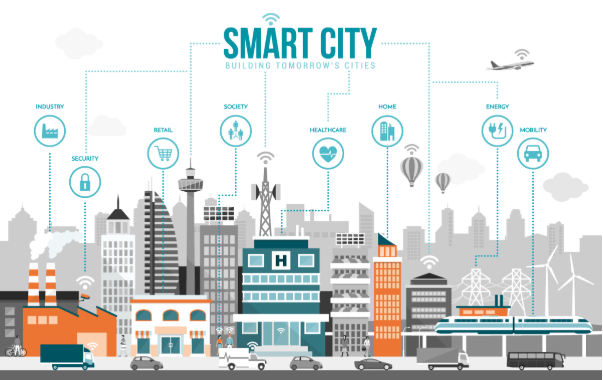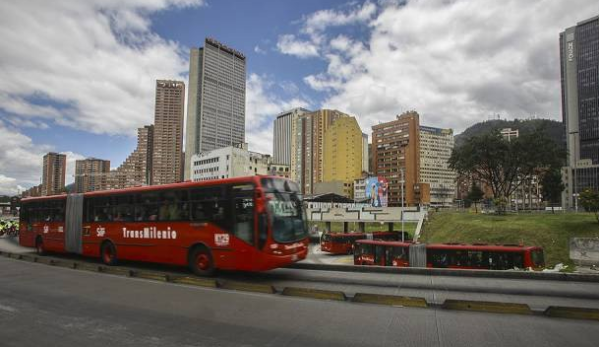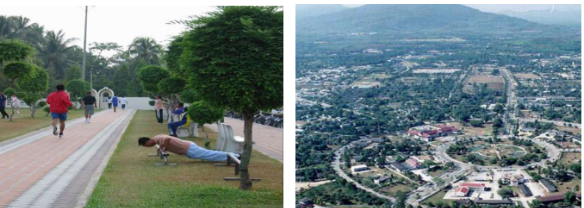We are living in a digital age of sound bites and buzzwords. Sometimes with all that information and technology at our disposal, it is easy to lose sight of what's really important. Discussing smart cities is fashionable, but we must not forget that we are here in front of a real action plan for a better future, not just a passing fad.
During the months of February and March, we have covered in our blog several examples of successful smart city implementation.We have talked about the trajectory of Barcelona, which has become a reference point for other cities, seeking to start on the path of a smart city. We have also explored Sidewalk Toronto, a unique project that foresees the construction of a visionary smart neighborhood of 325 hectares on the shores of Lake Ontario. In the last case study, we covered several projects of future smart cities in Mexico and the efforts made by large cities such as Mexico City and Monterrey to improve the quality of life of their citizens through new smart resources.
In this article, we turn to another important aspect of smart cities, one that often remains in the background, which is the social impact that the meditated implementation of the smart city strategies could have.

Source: Arc Advisory Group
Beyond High-sounding Words
Smart is a rather embellishing adjective that dresses everything up without making a fuss about it. At times, however, it may seem that we use it excessively to sound more sophisticated. Therefore, we must understand that a smart city – an authentic smart city – is not a city dominated by applications or high-tech gadgets, like security cameras that follow every step we take. On the contrary, it is a city that uses new technologies and smart resources to solve the most pressing problems of citizenship. In today's post, we will focus on the social dimension of smart cities.
When a new urban rehabilitation plan is proposed, developers and city authorities usually have three main concerns.
- How will the development be financed and, in turn, what economic benefits can it bring?
- What will the environmental impact of urban infrastructure be and how sustainable it is?
- How to obtain the support of local stakeholders to implement the project?
With the environmental, economic and governance dimensions of sustainable development taken into account, the social dimension remains often the lowest of priorities.
Although developers sometimes evaluate the social and health impacts of established plans, most of the time they don't integrate social factors into planning and design. Cities are dynamic places. Public areas, housing, and transportation centers offer unique opportunities for developers to create potentially positive impacts and social benefits that include strengthening community ties, facilitating access to jobs, and making streets safer for us all.
Good practices for Social Change
There are actually many ways that designers and builders can integrate social objectives into key stages of development plans, from project conception and design options to continuous monitoring and evaluation to provide lasting social benefits to communities. Thankfully, this idea of 'social sustainability', its successful functioning and the long-term existence of communities, is evolving. To illustrate our point, shortly we will cover some cases that prove that social sustainability can have a huge impact on urban communities.
Social Thinking at the Grassroots Level
In the year 2000, Bogotá (Colombia) opened its TransMilenio bus system to the public. From the initial stages of its planning, the TransMilenio network was designed to provide access to better employment opportunities for the people with lower incomes, that tend to live on the periphery of the city.
TransMilenio's success in improving social equity by providing feeder buses that connect low-income areas with major routes supports a much larger idea: all decisions of urban development should be made taking into account the potential good of its social impacts and benefits.
This practice forms the basis for innovative solutions to integrate fair practices in cities' transport policies, benefiting residents of different socioeconomic statuses.

Source: Bogotá City Hall
Designs That Enhance Social and Cultural Outcomes
No one would deny that large-scale policy decisions have far-reaching social impacts on all of us, however, we are fast to forget that small-scale urban design options can also influence the way we interact with one another. Let's take Northern Ireland, a country marked by its history of sectarian division as an example, its capital, the city of Belfast, contains areas that are the marked territory of either Protestant and Catholic communities. Belfast's inhabitants can deduce each other's ethnic identity from the small everyday details, like which side of the sidewalk you walk on, the colors of the flagstones, the direction from which you enter a building etc.
In one inspiring case, a developer who wanted to build a housing complex for younger tenants decided to hire anthropologists in order to put the sectarian construction practices behind them. The developer entrusted these social scientists with exploring the ways in which the characteristics of the streets and the movements of individuals, in particular, reflected their ethnic identities.
Anthropologists recommended placing the entrances to the complex in neutral areas so that residents could enter without revealing their ethnic identity. We believe that all developers have something to learn from this example about the social and cultural ramifications of design decisions for specific communities and contexts.
Continuous Monitoring of Social Input
In order to guarantee better outcomes, the governments and cities should continuously monitor and evaluate the way social inputs are incorporated into urban design and construction. This way we can make sure that social objectives are met, plans are followed and future projects have more points of reference.
The Ministry of Health of Thailand has found a successful formula to evaluate the social and health impacts of the Garden City Project, a plan to build parks, gardens and green spaces in Yala (Thailand), for public benefit. After the completion of the project, several street vendors and residents were observed and interviewed in the new green areas.
From this research, local authorities learned that thanks to the newly constructed public green spaces people socialized more with their friends and newcomers and that their incomes had risen. The research also proposed a set of recommendations to further improve the project and through that the lives of the residents of Yala.

Source: Ministry of Health Thailand
The Importance of Citizen Participation in Improvement Projects
Urban form and community participation in urban development are two crucial elements that have the greatest influence on the behavior, thoughts, and feelings of the community.
In Khayelitsha, a township of Cape Town (South Africa), the Violence Prevention through Urban Upgrading Programme (VPUU) has achieved to transform its previously ruined and dangerous streets into a safer, more vibrant and attractive neighborhood.
Through a survey and interactive events, where residents and professionals could express their opinions and concerns, problems related to crime, community needs and organizational patterns in urban spaces were identified. To deter crime in these places, residents also participated in the improvement projects, paving walkways and installing street lighting in order to provide safe routes through dense informal settlements.
These new features contributed to making the community a safer place. In fact, the homicide rate was reduced by 39% between 2003 and 2010. Additional positive social impact projects include employment opportunities for residents and trauma counseling for women. These solutions foster positive behaviors in the community, such as collaboration and feelings of pride and security.
A New Way of Defining Success
As we have seen in this post, the implementation of a smart city is not limited to the use of many gadgets but goes much further. It is rather a philosophy and ideology to ensure constant improvement in our lives. Small changes in our way of constructing and how we understand spaces can have important repercussions for the people who inhabit them. This is why it is important that a city is not smart just by its name or by the image it wants to give, but in its essence.


 Source: Arc Advisory Group
Source: Arc Advisory Group
 Source: Bogotá City Hall
Source: Bogotá City Hall
 Source: Ministry of Health Thailand
Source: Ministry of Health Thailand
